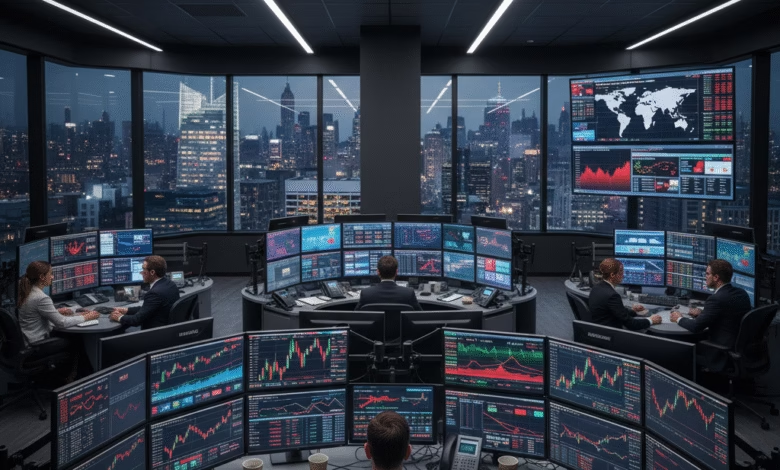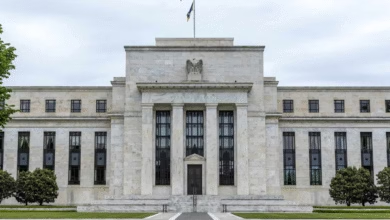Why Foreign Companies List on the US Stock Exchange (ADRs Explained)
Understand why many foreign companies come to list on the US stock exchange

Have you ever wondered how you can buy stock in a Japanese company like Toyota or a Taiwanese semiconductor giant like TSMC as easily as you can buy shares of Apple or Ford? These companies are headquartered oceans away, report their earnings in different currencies, and operate under different legal systems. Yet, through your standard U.S. brokerage account, you can invest in them with a simple click.
This isn’t a coincidence; it’s by design. The world’s most ambitious and successful international companies make a deliberate, strategic decision to list their shares on American stock exchanges like the New York Stock Exchange (NYSE) or NASDAQ. They actively seek out U.S. investors, and they do so for a set of very powerful reasons centered on capital, prestige, and growth.
The key that unlocks this global marketplace for American investors is a brilliant financial instrument called an American Depositary Receipt (ADR). This guide will explore why the U.S. market is such a powerful magnet for global corporations and demystify the mechanics of ADRs—the simple tool that lets you build a truly international portfolio from the comfort of your home.
The Allure of American Capital: Tapping the World’s Deepest Financial Pool

The single most important reason foreign companies flock to U.S. exchanges is to gain access to the largest, most liquid, and most diverse pool of investment capital on the planet. The U.S. financial market is a behemoth, representing trillions of dollars in wealth and investment power.
- Unparalleled Scale: The combined value of the NYSE and NASDAQ is greater than the next several largest global exchanges combined. This massive scale means there is an incredible amount of money looking for investment opportunities. For a foreign company seeking to raise billions of dollars for a major expansion, its smaller home market might not have the capacity. The U.S. market does.
- Diverse Investor Base: The U.S. market isn’t just large; it’s incredibly diverse. It includes giant institutional investors like pension funds, mutual funds (like Fidelity and Vanguard), hedge funds, and insurance companies. Crucially, it also includes a massive and active base of individual retail investors. This broad audience creates a deep and stable demand for shares.
- Higher Liquidity: Liquidity is the ease with which a stock can be bought or sold. U.S. markets have the highest trading volumes in the world, meaning there are always buyers and sellers. This high liquidity is incredibly attractive to foreign companies, as it ensures their stock can be traded efficiently and can lead to a more stable and often higher valuation than they might achieve in a less liquid home market.
What Is an American Depositary Receipt (ADR)? The Gateway to Global Investing
A foreign company can’t simply list its home-country shares directly on the NYSE. There are logistical and regulatory hurdles. The solution is the American Depositary Receipt (ADR), a clever invention from the 1920s that acts as a bridge between the foreign market and the U.S. market.
Think of an ADR as a claim check for a foreign stock. Here’s how it works in simple terms:
- Shares are Deposited Abroad: A large, U.S.-based financial institution, known as a depositary bank (like BNY Mellon, JPMorgan Chase, or Citibank), buys a large block of shares of the foreign company on that company’s home stock exchange.
- Shares are Held in Custody: These shares are then held in a custodian bank in the company’s home country. They don’t leave their country of origin.
- The ADR is Issued in the U.S.: The U.S. depositary bank then issues a certificate—the ADR—in the United States. Each ADR represents a certain number of the underlying foreign shares (it could be one share, multiple shares, or even a fraction of a share).
- Trading in U.S. Dollars: This ADR is then listed on a U.S. exchange and trades just like any other American stock. It’s bought and sold in U.S. dollars, and its price moves in real-time throughout the U.S. trading day.
- Dividends in U.S. Dollars: If the foreign company pays a dividend, it pays it in its local currency to the depositary bank. The bank then converts these payments into U.S. dollars and distributes them to the ADR holders.
This elegant system solves all the major problems for a U.S. investor. You don’t need a special international brokerage account, you don’t need to worry about converting currency, and you can track your investment in familiar U.S. dollars.
The Tangible Benefits of a U.S. Listing for Foreign Companies

Beyond just tapping into the capital, a U.S. listing offers a host of strategic advantages that can transform a foreign company’s global standing.
- Increased Visibility and Prestige: A listing on the NYSE or NASDAQ is a global “stamp of approval.” It signals to the world that the company has met some of the highest standards for corporate governance and financial transparency. This enhanced prestige can help the company build its brand, attract customers, and form strategic partnerships worldwide.
- A Pathway to Higher Valuation: By exposing the company to a larger pool of investors, a U.S. listing can increase the demand for its shares. This higher demand and greater liquidity often translate into a higher and more stable valuation for the company’s stock.
- Employee Compensation: For a global company competing for top talent, especially in the United States, having a U.S.-listed stock is a powerful tool. It allows them to offer stock options and other equity-based compensation that is easy for their U.S. employees to value and trade.
- Currency for Acquisitions: A U.S.-listed stock can be used as a form of currency to acquire other companies, particularly American ones. It is often far easier and more attractive for a U.S. company to accept a stock-based offer from a company that is also listed on a U.S. exchange.
The Investor’s Perspective: Why ADRs Are a Win for You
The ADR system is designed with the American investor in mind, providing a host of benefits that make international investing simple and secure.
- Simplicity and Convenience: The biggest advantage is ease of use. You can buy, sell, and hold ADRs in the exact same brokerage account you use for your U.S. stocks. All the paperwork and statements are integrated seamlessly.
- Regulatory Protection and Transparency: This is a crucial, often overlooked benefit. For an ADR to be listed on a major U.S. exchange, the foreign company must register with the U.S. Securities and Exchange Commission (SEC). This means they are required to comply with the same rigorous financial reporting standards as U.S. companies, including filing regular financial statements in English according to U.S. Generally Accepted Accounting Principles (GAAP) or International Financial Reporting Standards (IFRS). This gives you a level of transparency and investor protection that you might not get if you were investing in that company’s home market.
- Easy and Effective Diversification: One of the cornerstones of smart investing is diversification. ADRs are one of the easiest ways to diversify your portfolio geographically. They allow you to invest in the economic growth of Europe, Asia, or South America, helping to reduce the risk of being too heavily concentrated in the U.S. economy alone.
Are There Risks Associated with Investing in ADRs?
While ADRs are convenient, it’s important to remember that they are still foreign investments and carry their own unique set of risks that differ from domestic stocks.
- Political and Economic Risk: The company’s primary operations are in its home country. Your investment is therefore exposed to that country’s political instability, regulatory changes, or economic downturns.
- Currency Risk (Indirect): Although the ADR trades in dollars, the company’s actual revenue and profit are earned in its local currency. If that currency weakens significantly against the U.S. dollar, those profits are worth less when translated back into dollars. This can negatively impact the company’s reported earnings and, in turn, the ADR’s price and your dividend payments.
- Information Gaps: While SEC filings provide a high level of transparency, important news and market sentiment can sometimes develop more quickly in the company’s home country. There can be a slight lag before this information is fully reflected in the U.S. market.
A Bridge Between Global Markets and Your Portfolio

The desire of foreign companies to list on U.S. exchanges is a powerful testament to the strength, depth, and prestige of the American financial system. They come seeking capital, visibility, and a higher valuation. To make this happen, the American Depositary Receipt (ADR) was created, serving as an ingenious and secure bridge.
This bridge works in both directions. It allows the world’s best companies to connect with American capital, and it allows American investors to easily and safely connect with global growth opportunities. By understanding how ADRs work, you can look beyond our borders and build a more robust, diversified, and truly international investment portfolio.





